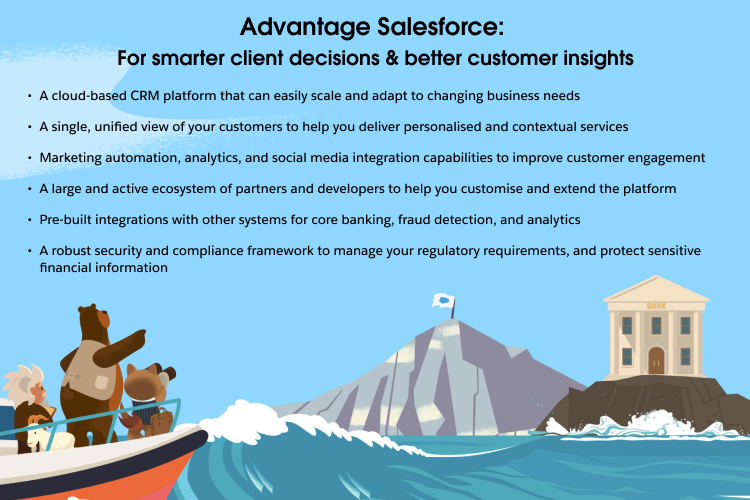“Banking is necessary, banks are not.” This statement by Bill Gates from 1994 has never rung truer than in today’s digital age where fintech and BigTech are upending established banking models.
India’s fintech firms now hold 36% of the share of new-to-credit customers, compared to banks’ 22%. Their market share in UPI transactions is also higher - 93% against banks’ 7%.
It's a sign of things to come and a strong indicator of the shift in consumer preferences towards experience-led, contextual, and digital-first banking where the ‘service’ and ‘service provider’ are essentially decoupled.
The challenge for banks is to stay relevant amidst these shifts. Fortunately, 72% of Indian consumers still trust traditional banks. And as our research shows, trust becomes even more important in times of change. So, as banks carve out their future, trust must be the bedrock on which new technologies, services, and ecosystems are built.
The bank of the future
In the past few years, the financial services sector has seen significant changes – including the explosion of UPI-led digital payments, the coming-of-age of public payment infrastructure, the emergence of open banking protocols, maturing fintech models, and fundamental shifts in consumer behaviour.
While FY 2022-23 was a year of resurgence after Covid-19, FY 2023-24 promises to be one of growth. Banks will focus both inward and outward – doubling down on strategic execution, while also preparing for the challenges of a dynamic world.
Here are a few emerging themes that will shape the future of banking:
1. Financial inclusion picks up steam
The Reserve Bank of India’s (RBI’s) Financial Inclusion Index – which gauges how easily the Indian population can access and afford financial products and services – rose to 56.4 in 2022 from 53.9 in 2021. We believe that much of this improvement can be attributed to the financial inclusion initiatives that India has launched in recent years.
For instance, regulators are encouraging differentiated banking licences (small finance banks and public banks), digital-only non-banking financial companies (NBFCs), digital banking units, and account aggregators. They’re also backing market infrastructure such as Unified Payments Interface (UPI), Goods and Service Tax Network (GSTN), Trade Receivables Discounting System (TReDS), and the JAM (Jan Dhan Yojana, Aadhaar, and mobile number) Trinity, while driving a customer-first approach to regulation.
Other financial inclusion initiatives include:
- Pradhan Mantri Jan-Dhan Yojana (PMJDY) which aims to provide universal access to banking facilities such as savings and deposit accounts, credit, insurance, and pension
- Pradhan Mantri Mudra Yojana (PMMY) which simplifies access to finance for small businesses
- The RBI’s Financial Inclusion Index which measures how effectively financial products have been extended to unbanked populations
- Rajiv Gandhi Shilpi Swasthya Bima Yojana (RGSSBY) which offers a health insurance scheme for workers in the unorganised sector
- Kisan Credit Card (KCC) which offers a credit facility for farmers to purchase seeds, fertilisers, and pesticides
- Jeevan Pramaan which provides a biometric-enabled digital service for pensioners to securely access pension-related information, and digitally sign pension documents
With India expected to have one billion smartphone users by 2026, banks have a tremendous opportunity to bring millions of underserved rural consumers into the mobile banking fold. Bharat is the next bastion waiting to be conquered.
2. Financial wellness: The new strategic imperative
Banks can rise to the challenge by harnessing the power of AI/ML and analytics to draw out insights from customer data. This intelligence can then be used to offer personalised products and services that are more closely aligned to customer goals – be it saving for retirement, educating children, or purchasing a new home.
Customer insights can also be used to deliver ‘nudges’ that help the customer prevent fraudulent activities, access better terms of credit, or retire high-interest debt.
A few new-age Indian banks like Kotak Mahindra Bank, Axis Bank, ICICI Bank, and HDFC Bank are offering financial well-being advice to customers based on their spending habits and income. This trend will pick up the pace, as more customers seek to improve their financial future.
3. Embedded banking: The next generation opportunity
Tomorrow’s consumers may never have to interact with a traditional bank. Embedded banking will make it possible for them to access financial products and services through non-financial companies like ecommerce platforms.
Many non-banks are already using APIs to access and incorporate financial services from banks into their products or platforms. This offers consumers greater ease and convenience. For example, a consumer buying a car from an online marketplace can also get an auto loan or insurance policy without leaving the portal.
Over time, more and more banking services will be integrated into the apps and platforms that consumers use every day – be it a ride-hailing service, a social media app, or an online grocery store. Banks that capitalise on these shifts, and bring financial services closer to customers will be better positioned to strengthen loyalty and revenue.
4. Banking with Gen Z: A paradigm shift
A new generation is entering the workforce – and their relationship with banks is very different.
From our conversations with customers and industry leaders like Renu Sud Karnad, Managing Director, HDFC Limited, it’s apparent that Gen Z in India is:
- More likely to use digital banking platforms such as mobile apps and online banking websites to manage their finances
- Comfortable with technology, and prefer convenient, self-service options
- Prone to comparing and researching financial products and services from different providers before making a decision
- Concerned about the planet’s wellbeing, and more likely to choose banks that demonstrate a commitment to sustainability and social responsibility
Getting to know this demographic better will be a cornerstone strategy for banks heading into the new financial year.
5. Banking-as-a-Platform (BaaP): A win-win for everyone
When a traditional bank acts as a platform for other financial services providers to offer their products and services, all participants benefit. Banks can offer more services without having to build and maintain additional infrastructure. Fintech firms can expand their market. And customers can access a wider range of financial services from one platform.
An early example of such open platform initiatives is InstaBIZ - a digital platform from ICICI Bank that allows small and medium-sized businesses (SMBs) to access banking solutions like instant settlements, quick collections with UPI, QR codes, and point-of-sale (POS) machines – even without an ICICI bank account.
While the shift to platform banking may not be simple, the rewards could be tremendous. Being a first-mover in this space could offer significant advantages.
6. Sustainable banking: Shaping a greener, more equitable world
Today’s banks are expected to incorporate environmental, social, and governance (ESG) considerations into their business operations and lending practices. Profitability goes hand-in-hand with sustainability and social responsibility.
Sustainable banking practices include:
- Financing renewable energy and energy efficiency projects
- Supporting SMBs in underprivileged communities
- Implementing sustainable lending practices – for example, avoiding financing projects that can cause environmental degradation or social harm
- Promoting fair labour practices and human rights
- Incorporating ESG factors into investment decisions
Several Indian banks such as HDFC Bank, Axis Bank, ICICI Bank, and SBI are leading the way on sustainable banking. As more financial providers hop onto this bandwagon, India will be better placed to meet its climate goals.
7. Banking-as-a-Service (BaaS): Creating new revenue streams
A growing number of third parties like fintech startups and retailers are leveraging the capabilities of traditional banks to offer banking services such as account opening, deposit-taking, and payments processing - under their own brand name.
BaaS benefits both banks and non-financial companies. Banks can use it to diversify their revenue streams, reach new customer segments, and create new partnerships. Meanwhile, non-financial companies can use it to offer new services to their customers, improve customer retention, and drive growth.
These seven trends are democratising banking, and fostering a singular customer experience. The common denominator across all of them is technology. It’s my belief that AI-based hyper-personalisation, customer data platforms, secure integration management, analytics, customer lifecycle management tools, and collaboration technologies will help banks scale and create an ecosystem that’s agile, transparent, open, and secure.
How Salesforce can help

Create a bankable brand for your customers
Read more:
5 financial services trailblazers that have cracked the code on customer delight
From brick-and-mortar to click-and-mortar hybrid banking with Salesforce Financial Services Cloud
How banks can transform customer relationships by unlocking the power of data analytics
Customer experience in the digital age: Key lessons from HDFC Limited





